Third Hand
Vlatka Horvat
Apr 04, 2019
(7pm)
Performance
Please RSVP
The starting point for Vlatka Horvat’s performance Third Hand is a collection of scenes, images, and moments that other artists and writers have recounted to her from memory. Responding to this unruly catalogue of vivid fragments, all of which focus on the performing body, Horvat creates a work that is somewhere between collage, animated archive, partial reenactment, and memory palace. Third Hand explores the ways in which performance lingers despite the processes of distortion, displacement, and erasure which take place in memory and over time, and which are amplified through the act of narration.
The human body summoned in Third Hand is a problematic, transforming, and misremembered one—mistaken for animal, ghost, object, or machine; hesitant and determined; exhausted and persisting; ecstatic, working, resting, and playing, as it is made and remade in language and in the moment of performance.
Work in progress developed and performed with Michael Thomas.
Vlatka Horvat works across a wide range of forms, including sculpture, installation, drawing, performance, photography, and writing. Her work is presented internationally in a variety of contexts—in museums and galleries, theater and dance festivals, and in public space. Recent exhibitions include: Croatian national Pavilion at the 16th Architecture Biennale, Museums Sheffield, Renata Fabbri Gallery (Milan), Eastwards Prospectus (Bucharest), Museum of Contemporary Art Zagreb, Bard Center for Curatorial Studies (upstate NY), Wilfried Lentz Gallery (Rotterdam), CAPRI (Düsseldorf). Her performances have been commissioned and presented by venues across Europe, North America, and beyond, including HAU – Hebbel am Ufer (Berlin), LIFT – London International Festival of Theatre, PACT Zollverein (Essen), Tanzquartier Wien (Vienna), Outpost for Contemporary Art (LA), and many others. Born in what used to be Yugoslavia, Horvat moved to the US as a teenager. After 20 years in the States, she currently lives in London, where she teaches in the Fine Art department at Central St Martins, University of the Arts London.
IN>TIME is Chicago’s triannual winter-long performance festival. The IN>TIME Festival features a season of performances, presentations, and exhibitions at venues throughout the city from local, national, and international artists.
Image: courtesy of the artist

In Search of Philip Johnson
Mark Lamster
Mar 28, 2019
(6pm)
Talk
Please RSVP
Most people in the design world know Philip Johnson, or think they do: He was the controversial architect with the round glasses who built a glass house and gave us the chippendale-capped AT&T Building in New York. But who, really, was he? In the course of his long life, he had a series of careers—curator, critic, journalist, politician—of which architect was only one. He was intellectually peripatetic. His buildings ranged widely in style and quality. How did he become this way? Who exactly was this complex man? Johnson biographer and Graham grantee Mark Lamster will talk about the process of figuring out Johnson, and putting that story into narrative form for his new book, The Man in the Glass House: Philip Johnson, Architect of the Modern Century.
Mark Lamster is the architecture critic of the Dallas Morning News and a professor at the architecture school of the University of Texas at Arlington. In 2017, he was a Loeb Fellow at the Harvard Graduate School of Design. His writing has appeared in The New York Times, the Los Angeles Times and The Wall Street Journal, and he is a regular contributor to numerous magazines.
Related Graham Foundation supported projects:
2010 research grant to Mark Lamster for Philip Johnson: A Biography
Image: The Glass House, in New Canaan, CT

Pita
Lampo Performance Series
Mar 16, 2019
(8pm)
Performance
RSVP required
Pita is Peter Rehberg. In this performance—his first US solo date in more than a decade—he offers a semi-improvised electronic music concert with a new modular set-up.
Peter Rehberg (b.1968, London) cofounded the influential Mego label in 1994 and soon after began recording under the name Pita. His first solo release, Seven Tons for Free, came out in 1996, melding noise with techno. Since then he has produced over a dozen albums, covering an astonishing variety of experimental electronic styles. The Get Out / Get Down / Get Off trilogy received broad international critical acclaim and helped define the radical underground experimental electronic scene of the 1990s. He has played numerous concerts all over the world, including SONAR, ATP, CTM Berlin, MUTEK, Donaufestival, Le Guess Who?, and Atonal. In 1999 he won the Prix Ars Electronica for Digital Musics & Sound Art. In addition to his solo work, he is best known for long term collaborations with Stephen O’Malley, as KTL, and with Jim O’Rourke and Christian Fennesz as Fenn O’Berg. He also runs the groundbreaking label, Editions Mego, which has released albums by artists such as Hecker, Mark Fell, Fennesz, and Kevin Drumm.
In May 2009 Rehberg performed at Lampo with Marcus Schmickler. He also appeared at Lampo in March 2003, when he premiered Get Off.
Since 2010 the Graham Foundation has supported and partnered with Lampo to produce this performance series held at the Madlener House. Lampo, founded in 1997, is a non-profit organization for experimental music and intermedia projects.

Satellite Citizens: Cartographies and Cosmologies
Ingrid Burrington, Fred Scharmen, Design Earth, and Jonathan Solomon
Mar 07, 2019
(6pm)
Panel Discussion
Please RSVP
Satellite Citizens brings together Dimensions of Citizenship participants and catalog essayists to discuss the past, present, and future of technology and space exploration. Who is excluded and included when we gaze upward to the cosmos or delve deep into the network? Panelists include writer Ingrid Burrington, Rania Ghosn and El Hadi Jazairy of the collaborative practice Design Earth, and Fred Scharmen. Moderated by Jonathan Solomon, director of the Department of Architecture, Interior Architecture, and Designed Objects at School of the Art Institute of Chicago (SAIC).
This event is presented concurrently with the Chicago presentation of the Graham funded exhibition Dimensions of Citizenship: Architecture and Belonging from the Body to the Cosmos, a reinstallation of the official US Pavilion at the 16th International Architecture Exhibition of the Venice Biennale, at Wrightwood 659, which runs from February 28 through April 27, 2019.
Ingrid Burrington writes about the Internet, politics, and art, and has been published in The Atlantic, The Nation, ProPublica, San Francisco Art Quarterly, Dissent, and elsewhere. She’s given talks at conferences both in the US and abroad, and her art has been exhibited in galleries in New York, Tokyo, Leipzig, Baltimore, Philadelphia, and many other cities.
Led by Rania Ghosn and El Hadi Jazairy, Design Earth examines the geographies of urban systems—such as energy, trash, water, and agriculture—to prompt the debate on the techno-environment in the age of climate change. The design research practice has exhibited its works at the Venice Biennale and other leading international architecture events and has received numerous accolades, including the Young Architects Prize from the Architectural League of New York. Their After Oil project was collected by The Museum of Modern Art. Ghosn and Jazairy each hold Doctor of Design degrees from the Harvard Graduate School of Design, where they founded the journal New Geographies and were the respective editors for NG2: Landscapes of Energy and NG4: Scales of the Earth. They have authored numerous books, including the Graham Foundation grant-supported Geostories (Actar, 2018) and Geographies of Trash (Actar, 2015) as well as recent essays and projects published in Domus, Journal of Architectural Education, Avery Review, and Perspecta, among others. Ghosn is Associate Professor of Architecture and Urbanism at the Massachusetts Institute of Technology’s School of Architecture + Planning, and Jazairy is Assistant Professor of Architecture at the University of Michigan’s Taubman College of Architecture and Urban Planning.
Fred Scharmen teaches architecture and urban design at Morgan State University's School of Architecture and Planning. His work as a designer and researcher is about how architects imagine new spaces for new speculative future worlds, and about who is invited into those worlds. His most recently completed projects, with the Working Group on Adaptive Systems, include a mile-and-a-half long scale model of the solar system in downtown Baltimore (in collaboration with nine artists who made the planets), and a pillow fort for the Baltimore Museum of Art, based on Gottfried Semper's Four Elements of Architecture. His writing has been published in the Journal of Architectural Education, Log, CLOG, Volume, and Domus. His architectural criticism has appeared in the Architect’s Newspaper, and in the local alt-weekly Baltimore City Paper.
Jonathan Solomon is associate professor and director of Architecture, Interior Architecture, and Designed Objects at the School of the Art Institute of Chicago. His drawings, analytical and counterfactual urban narratives, appear in Cities Without Ground (ORO, 2012), and 13 Projects for the Sheridan Expressway (PAPress, 2004). Solomon edits Forty-Five, a journal of outside research, and was curator of the US Pavilion at the 2010 Venice Architecture Biennale. His interests include extra-disciplinary, post-growth, and nonanthroponormative design futures. Solomon received a BA from Columbia University and an MArch from Princeton University and is a licensed architect in the State of Illinois.
Related Graham Foundation supported projects:
2018 grant to the School of the Art Institute Of Chicago & The University of Chicago for Dimensions of Citizenship: US Pavilion, 16th International Architecture Exhibition
2017 grant to Rania Ghosn and El Hadi Jazairy for the publication Geostories
Image: Cosmorama by Design Earth at the 2018 U.S. Pavilion. Photo © Tom Harris. Courtesy of the School of the Art Institute of Chicago and the University of Chicago.

Atlas Unlimited: Entr’acte
Karthik Pandian and Andros Zins-Browne with Dr. Tasha K. Vorderstrasse and Sami Ismat
Mar 01, 2019
(7pm)
Performance
Please RSVP
At the midpoint of their unfolding series of exhibitions, Atlas Unlimited (supported by a 2018 Graham Foundation Grant to Individuals), artist Karthik Pandian and choreographer Andros Zins-Browne present “Entr’acte,” a lecture in the presence of an object. The lecture, delivered by archaeologist Dr. Tasha K. Vorderstrasse (Oriental Institute, Chicago) concerns a fragment of a sculpture found in the ancient Syrian city of Palmyra. Installed in the Madlener House for one night only, the object will rest on a base that the artists have produced in collaboration with Chicago-based furniture designer Casey Lurie. “Entr’acte” is presented concurrently with Pandian and Zins-Browne’s solo exhibition, Atlas Unlimited (Acts V-VI), at the Logan Center for the Arts at the University of Chicago, which runs from February 1–March 17, 2019. “Entr’acte” is produced in collaboration with emerging Syrian theater-maker, Sami Ismat.
American artist Karthik Pandian has held solo exhibitions at the Whitney Museum of American Art; Bétonsalon, Paris; Midway Contemporary Art, Minneapolis; and White Flag Projects, St. Louis, amongst others. His work was featured in the inaugural Made in L.A. at the Hammer Museum and La Triennale: Intense Proximity at the Palais de Tokyo as well as in group exhibitions such as Adventures of the Black Square: Abstract Art and Society 1915–-–2015 at Whitechapel Gallery; Film as Sculpture at Wiels Contemporary Art Centre, Brussels; and the 4th Marrakech Biennial, Higher Atlas. Pandian holds an MFA from Art Center College of Design and a BA from Brown University. He lives and works in Cambridge, Massachusetts where he teaches video, sculpture, and performance at Harvard University.
Andros Zins-Browne is an American choreographer who lives in Brussels and New York City. After receiving a degree in Art Semiotics from Brown University, he went on to study dance at PARTS in Brussels and in the fine arts department of the Jan van Eyck Academy in Maastricht. Zins-Browne's performances cross between stage and exhibition spaces including: Centre Pompidou Paris; ICA London; HAU Berlin; Stedelijk Museum Amsterdam; DeSingel Antwerp; EMPAC, Troy, NY; Kaaitheater Brussels; and the Impulse Festival, Düsseldorf where he received the Goethe Institute Award for The Host. His solo Already Unmade, a commission by The Boghossian Foundation, has recently been performed at the BOZAR Museum, Brussels; The Whitney Museum of American Art, in New York City; the Rockbund Art Museum, Shanghai; and Lafayette Anticipations, Paris.
Sami Ismat is a theatre and performance maker from Damascus, Syria currently living in Chicago as a refugee.
Casey Lurie is an independent designer based in Chicago.
Tasha Vorderstrasse is a Near Eastern archaeologist who focuses on questions of cultural identity and exchange.
Special thanks to builder Anthony Adcock
Related Graham Foundation supported projects:
2018 exhibition grant to Karthik Pandian & Andros Zins-Browne for Atlas Unlimited (Acts V—VI) at the Logan Center for the Arts at the University of Chicago, February 1–March 17, 2019
Image: Karthik Pandian and Andros Zins-Browne with De Looizemaanen, Atlas Unlimited Act I: Carnaval, Netwerk Aalst. Photo: Karthik Pandian

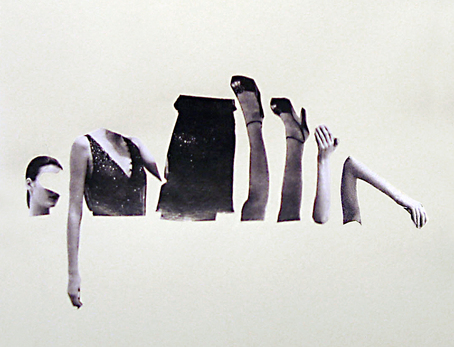
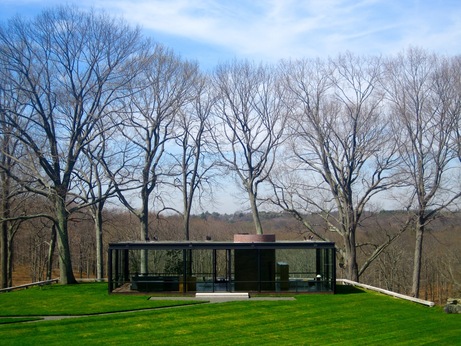
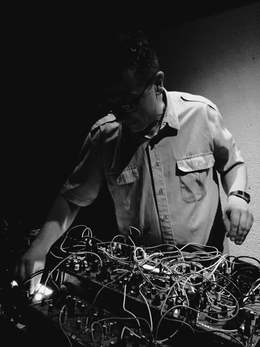
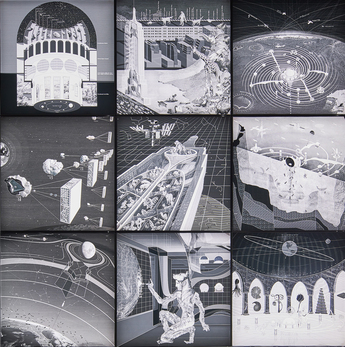
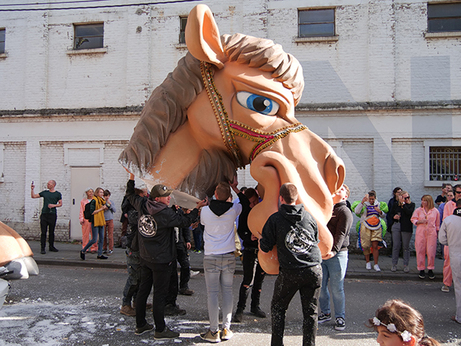
 PREVIOUS POSTS
PREVIOUS POSTS